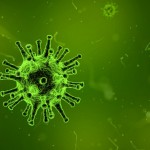Fibroids
Fibroids are non-cancerous tumors that grow in or around the womb (uterus). Fibroids are sometimes known as uterine myomas or fibromyomas. Fibroids are made of muscle cells and other tissues that grow in and around the wall of the womb or uterus. The cause of fibroids is unknown. Risk factors include being overweight or obese and is mostly seen in African-American. They can grow anywhere in the womb and are named according to their origin:
Intramural fibroids: These type grows within the muscle tissue of the womb. This is the most common place for fibroids to form.
Sub serous fibroids: It grows from the outside wall of the womb into the pelvis.
Sub mucous fibroids: It is generally seen in the inner wall into the middle of the womb.
Pedunculated fibroids: It grows from the outside wall of the womb and is attached to it by a narrow stalk.
Symptoms
Many women with fibroids have no symptoms. If symptoms persists, they may include:
Heavy or painful periods or bleeding between periods
Feeling "full" in the lower abdomen
Urinating often
Pain during sex
Lower back pain
Reproductive problems, such as infertility, multiple miscarriages or early labor
Causes
Fibroid is an overgrowth of smooth muscle cells. The womb is mainly made of smooth muscle. The exact cause is still not clear.
It can be due to genetics.
It is seen that fibroids are sensitive to estrogen, the hormone that is made in the ovary. Fibroids tend to swell when levels of estrogen are high. for example, during pregnancy. They also shrink when estrogen levels are low after the menopause.
Diagnosis
Physical examination: Some fibroids can be felt during an internal (vaginal) examination by a doctor.
Transvaginal ultrasound: A transvaginal ultrasound scan is sometimes used to diagnose fibroids. It is generally a painless procedure that involves inserting a small probe into the vagina. The probe uses sound waves to create an image of womb on a TV monitor.
Laparoscopy It is a procedure where a small tube that contains a light source and a camera. The camera transmits images of the inside of the abdomen or pelvis on a television monitor. The laparoscope can be flexible or rigid, depending on the procedure, but when diagnosing fibroids a rigid laparoscope is most often used.
For accurate diagnosis please consult your physician.
Treatments
Medicines that are used to treat heavy periods are:
Tranexamic acid is prescribed for 3-4 times a day. It works by reducing the breakdown of blood clots in the womb.
Anti-inflammatory medicines such as ibuprofen and mefenamic acid. These also help to ease period pain. They are taken for a few days at the time of your period. They work by reducing the high level of a chemical (prostaglandin) in the lining of the womb. Prostaglandin seems to contribute to heavy and painful periods.
Medication to shrink the fibroids: Women are given a gonadotrophin-releasing hormone (GnRH) analogue. This is a hormonal medicine that leads to low level of estrogen in body. Fibroids shrink if the level of estrogen falls. However, a low estrogen level can cause symptoms similar to the menopause (hot flushes, etc). These medications may also increase the risk of osteoporosis. Therefore this treatment is given for a maximum of six months. GnRH analogues, such as goserelin (eg Zoladex®) or leuprorelin acetate (eg Prostap® SR), are often prescribed for three to four months before having an operation, which will make it easier to remove fibroids. Sometimes a low dose of HRT is also given to reduce the incidence of menopausal side-effects.
A new medication treatment undergoing trials: A medicine called ulipristal acetate (UPA) has shown promise in preliminary research trials. This is currently used as an emergency contraceptive. It works by blocking the effects of the hormone progestogen. Progestogen is thought to play a role in fibroid development and so it was thought that this medicine may help to shrink fibroids. A small research trial has concluded that it does seem to have an effect on shrinking fibroids, with side-effects not being too troublesome. Further larger clinical trials are needed to establish whether this is indeed a good treatment option.
Surgery and other operative treatments: There are several different operations available to remove and treat fibroids.
Hysterectomy: This is the traditional and most common treatment for fibroids. Hysterectomy is the removal of the womb.
Myomectomy: This is a possible alternative, especially in women who may wish to have children in the future. In this operation, the fibroids are removed and the womb is left. This procedure is not always possible.
Endometrial ablation: This procedure involves removing the lining of the womb. This can be done by different methods. For example, using laser energy, a heated wire loop or by microwave heating. This method is usually only recommended for fibroids close to the inner lining of the womb.
NHP provides indicative information for better understanding of health. For any treatment purpose you should consult your physician.
Complications
Complications can occur as a result of the positioning of fibroids, and in cases where they are very large. Some possible complications are outlined below.
During pregnancy: During pregnancy, estrogens levels of the women can increase by as much as five times the normal amount. As fibroids are thought to develop due to high estrogen levels, this may lead to complications with the development of the baby, or cause problems during labor.
Infertility: Infertility (the inability to become pregnant) may occur in cases where a woman’s fibroids are very large. Large fibroids can sometimes prevent a fertilized egg getting attached to the lining of the womb, although this is rare.
References:
NHS
U S National Library of Science
Dept Of Health






